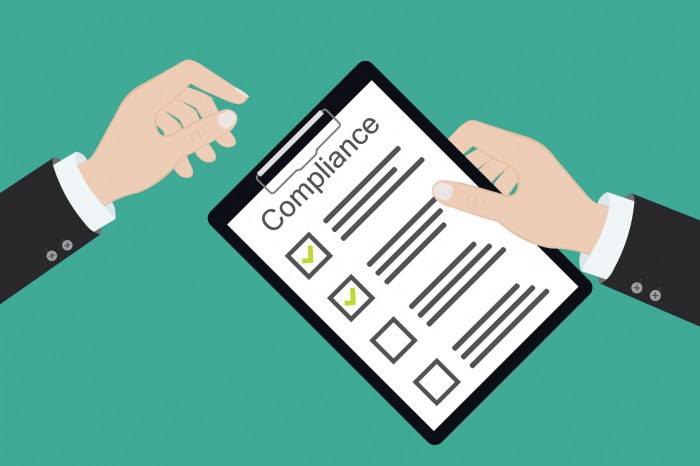Bringing Coding Compliance into the Digital Age Prevents Denials
Hospitals have relied on a relatively manual process and retrospective audits for coding compliance, but new technology is streamlining the process, allowing providers to get ahead of denials.

- Healthcare technology is credited with advancing clinical care, allowing providers to detect cancer by scanning radiology reports, improve chronic disease management standards, and enhance patient safety. But hospitals have yet to bring the same types of innovation to their financial processes, including coding compliance.
A recent survey of financial leaders from hospitals and health systems revealed that few organizations have automated more than 25 percent of their transactional work. Manual processes especially dominate the claims denial management process, with one analysis showing that about a third of providers still use a manual process to tackle claim denials.
As hospitals face higher expenses and less revenue, digitizing transactional processes like coding compliance will become increasingly important to survival.
Hospital coding compliance technology is key to identifying and correcting processes that lead to claim denials, which put as much as 3.3 percent of net patient revenue at risk every year. Coding compliance automation enables hospitals to get ahead of claim denials, educating coders, clinical documentation improvement specialists, and providers on how to submit clean claims the first time.
Coding compliance technology gets ahead of denials
Hospital coding compliance programs are unfortunately still rooted in the Excel spreadsheet, says Amanda Hyer, a self-proclaimed compliance geek with over 15 years of experience with coding and auditing.
“Excel spreadsheets have always been the backbone of auditing,” the current chief product owner at 3M explains. “To this day, I see a lot of hospitals still using the spreadsheet format and if they're not, then they're employing a hybrid approach in which they have a third-party audit application but they're still sending that information out to coders for education through a spreadsheet.”
Reducing hospital reliance on manual coding and auditing processes has been a major pain point because the industry has struggled to develop a centralized coding compliance platform, Hyer states.
“At hospitals, we have an EHR, we have a financial system, and we have an encoder, and all three of those technologies usually come from separate entities. Sometimes they talk to each other well and sometimes they don't,” she says.
Health IT system interoperability is a longstanding healthcare challenge, but the problem is especially troubling for hospital compliance programs. Data that ends up on claims for reimbursement must go through several departments and by the time the data is ready for an audit or compliance check, the claim has gone through many changes.
Quality checks in conjunction with formal audits are critical to ensuring what actually goes out on the final claim is accurate and complete for reimbursement, and that is a big opportunity for technology, Hyer says.
“A centralized coding compliance platform allows staff from clinical documentation improvement, coding, and auditing to work together to have a quality approach from the time a claim comes in until it goes out of the door,” she states.
Technology also helps hospitals to send cleaner claims the first time through prospective audits.
Hospitals traditionally perform retrospective audits in which compliance teams look back at a sample of claims to identify and correct risk areas that lead to claim denials. Retrospective audits are the foundation of an effective coding compliance programs, but technology enables hospitals to also look forward.
“On the prospective side, we're looking at the code set the coder assigned before the claim goes out the door,” Hyer explains. “The coder could have done everything right, but because the claim involves a diagnosis that is a high-risk area for denials, we have a clinical person come back and revalidate the data.”
“The prospective audit really ensures that you've got the cleanest claim possible before it goes out to billing,” she emphasizes.
Finding the right coding compliance technology
As hospitals increasingly demand technology to prevent the loss of revenue due to medical billing and coding errors, the market is growing rapidly. The mid-revenue cycle management market, which includes clinical documentation improvement and auditing technologies, is slated to reach $4.5 billion by 2023, a recent market report showed.
But not all technologies are created equal, Hyer stresses. Hospitals should be investing in coding compliance solutions that are not only user friendly, but also centralize operations.
“That centralization is, in my mind, one of the key components because if I can implement a platform that is shared by my CDI folks, my coders, and auditors – the three integral roles that review the documentation and help support reimbursement – then it really assists in obtaining quality,” she says.
Hospitals should also look for coding compliance solutions with robust reporting capabilities.
“Auditing and reporting definitely go hand-in-hand,” Hyer explains. “You need to be able to take information and blend it, so you can actually see where there are trends, identify risk areas, and monitor outcomes from claim edit changes.”
Strong reporting capabilities are also key to performing those prospective audits while continuing to conduct and use retrospective audits to reduce claim denials risks.
“Usually when we’re auditing, we’re pulling from either the retrospective audit or the prospective audit, and usually it is the retrospective audit,” Hyer says. “But the beauty of having both of those code sets present is that it allows you to compare what truly changed on the backend before the claim went out the door. So, you can start to isolate issues quicker.”
Technology has the ability to significantly streamline and add to hospital coding compliance programs. With more data and meaningful insights from that information, coding compliance teams have the ability to not only look back, but peer forward to prevent costly claim denials and lost revenue.
